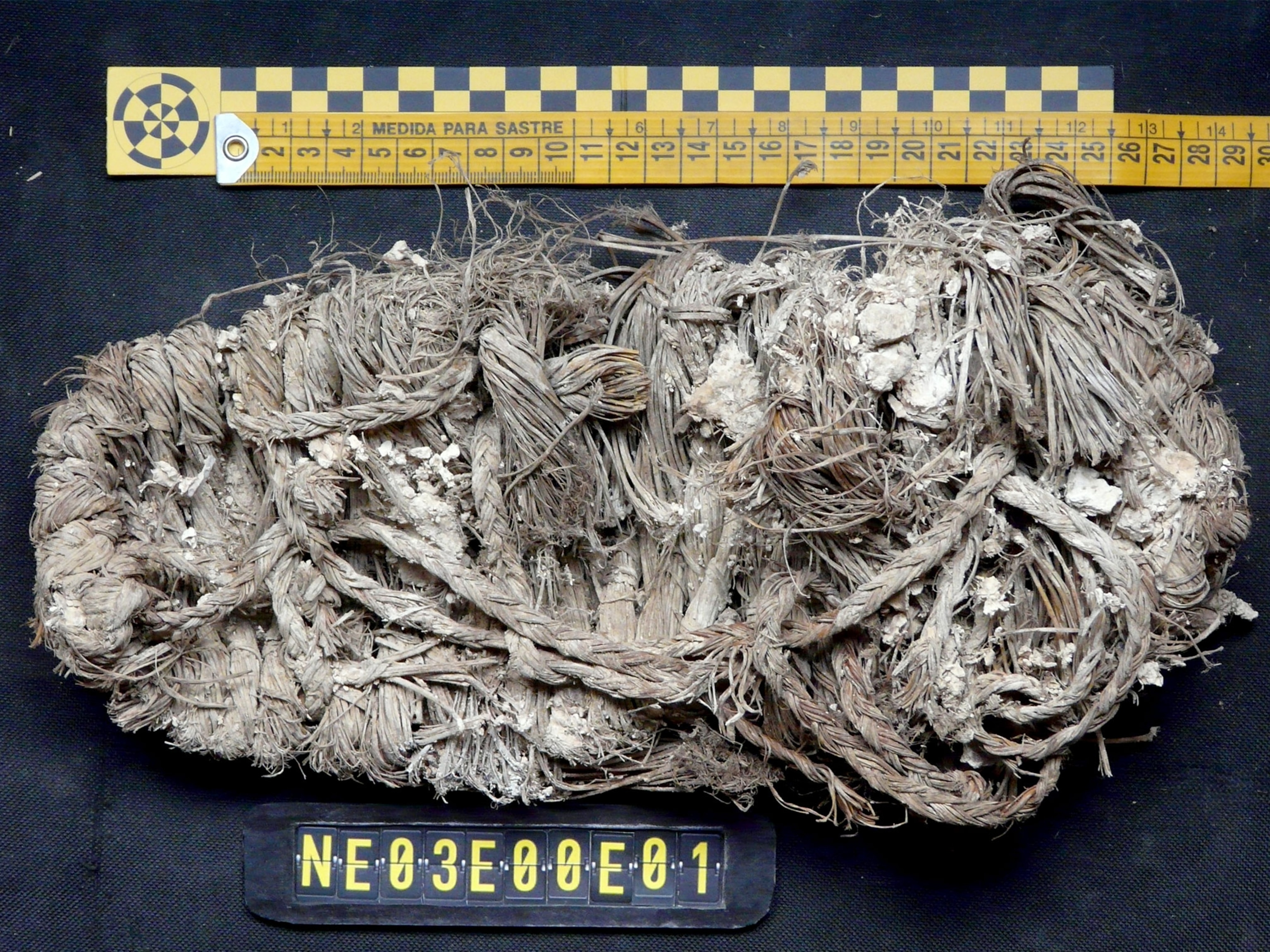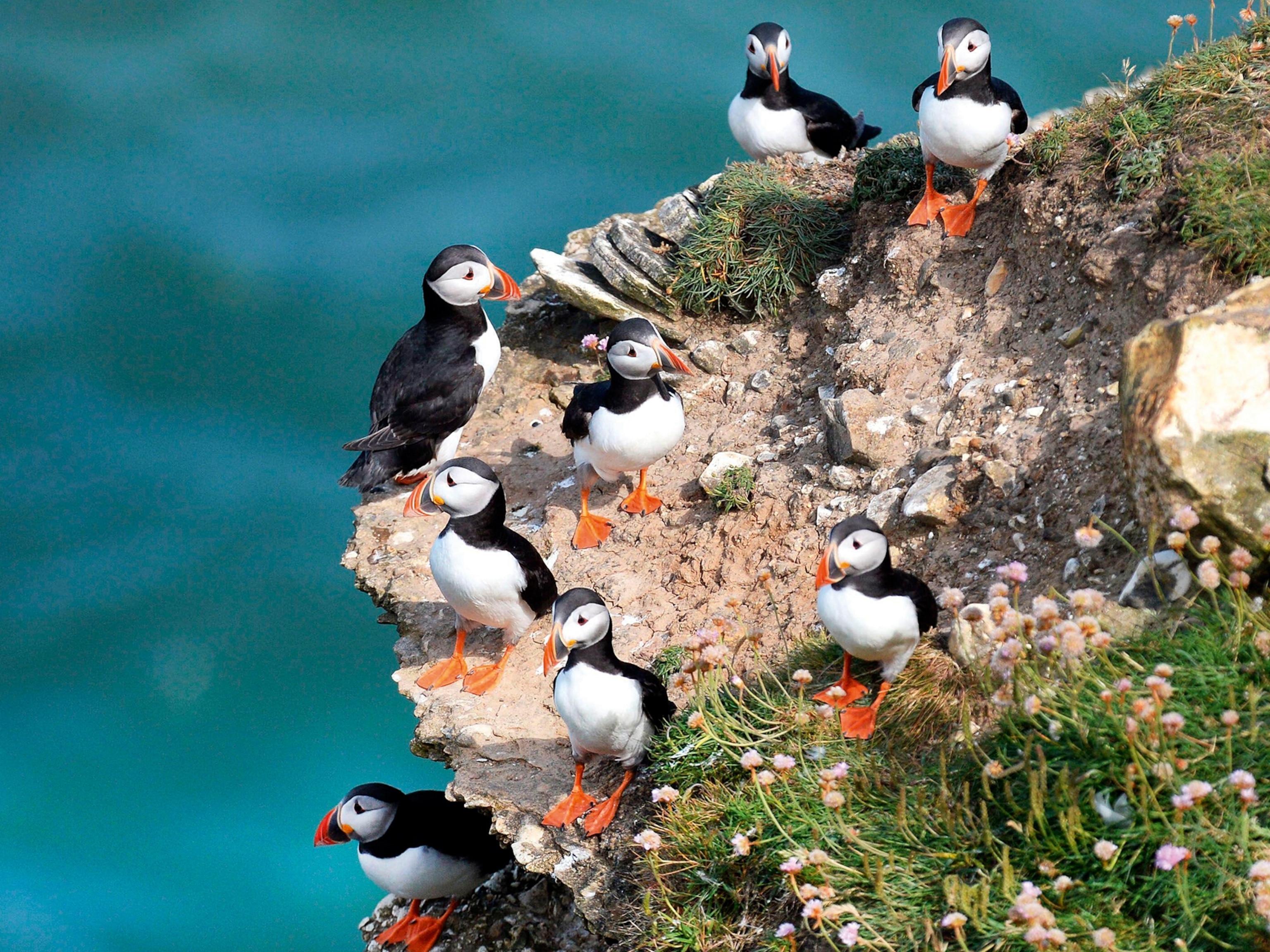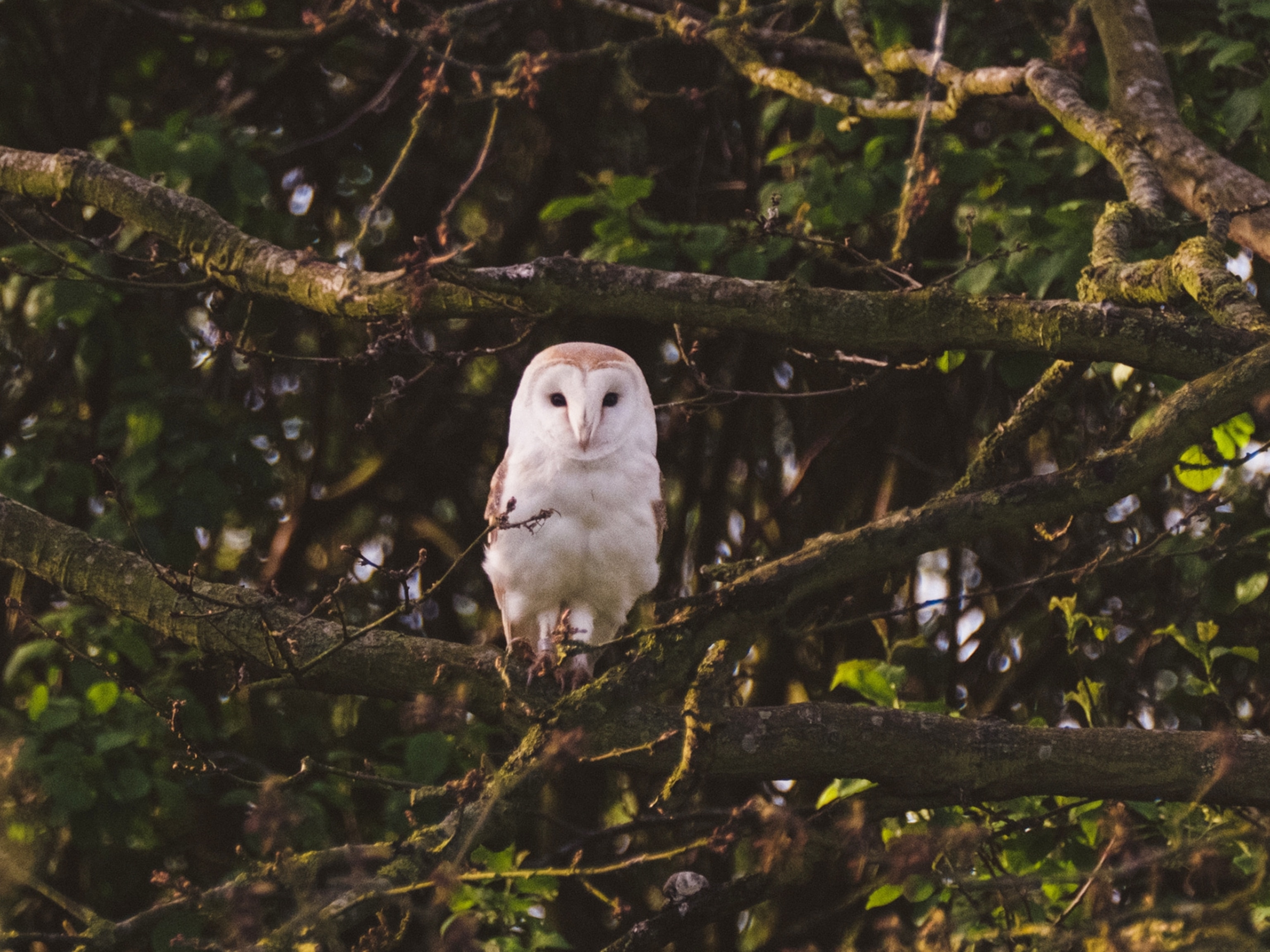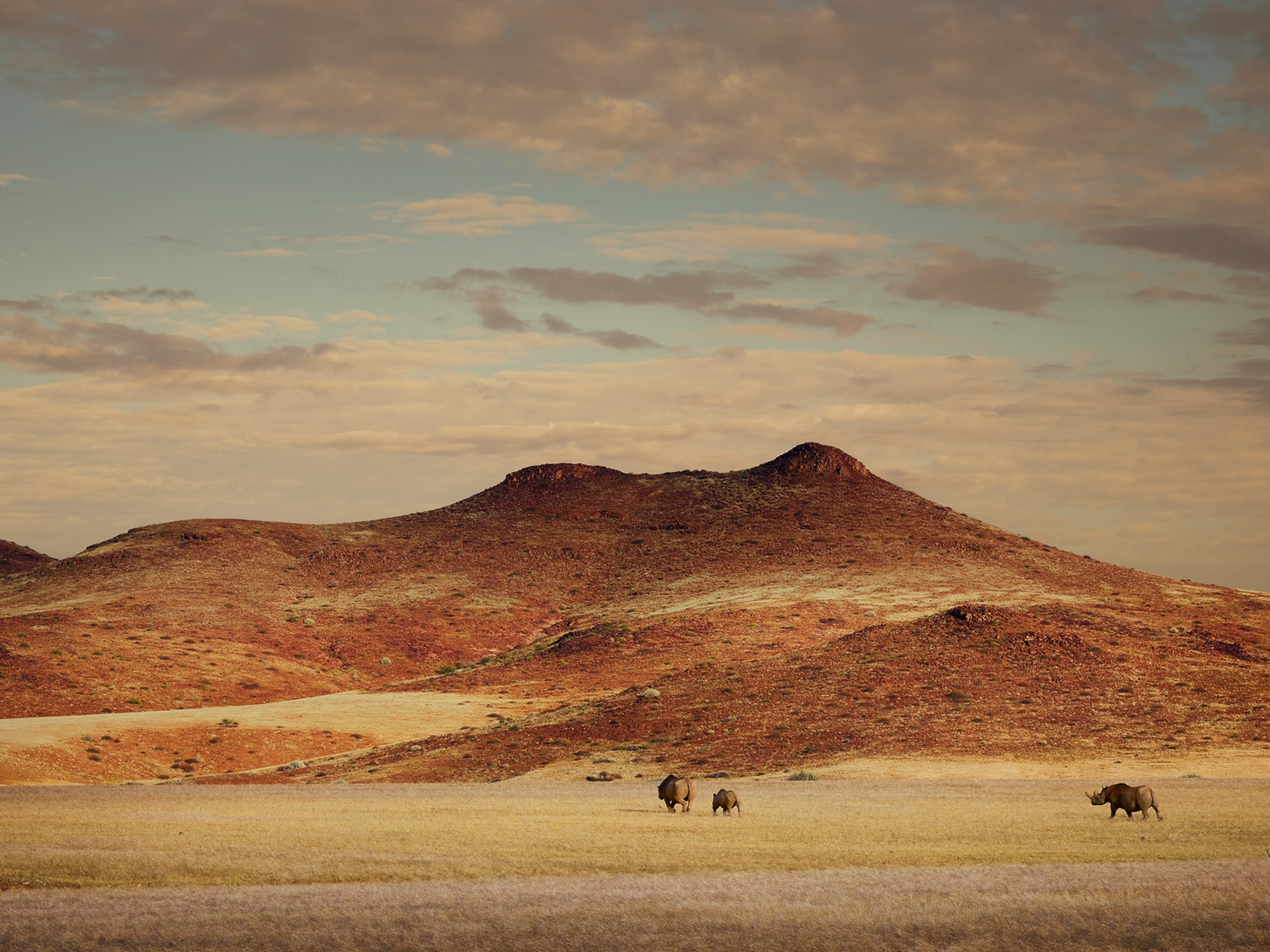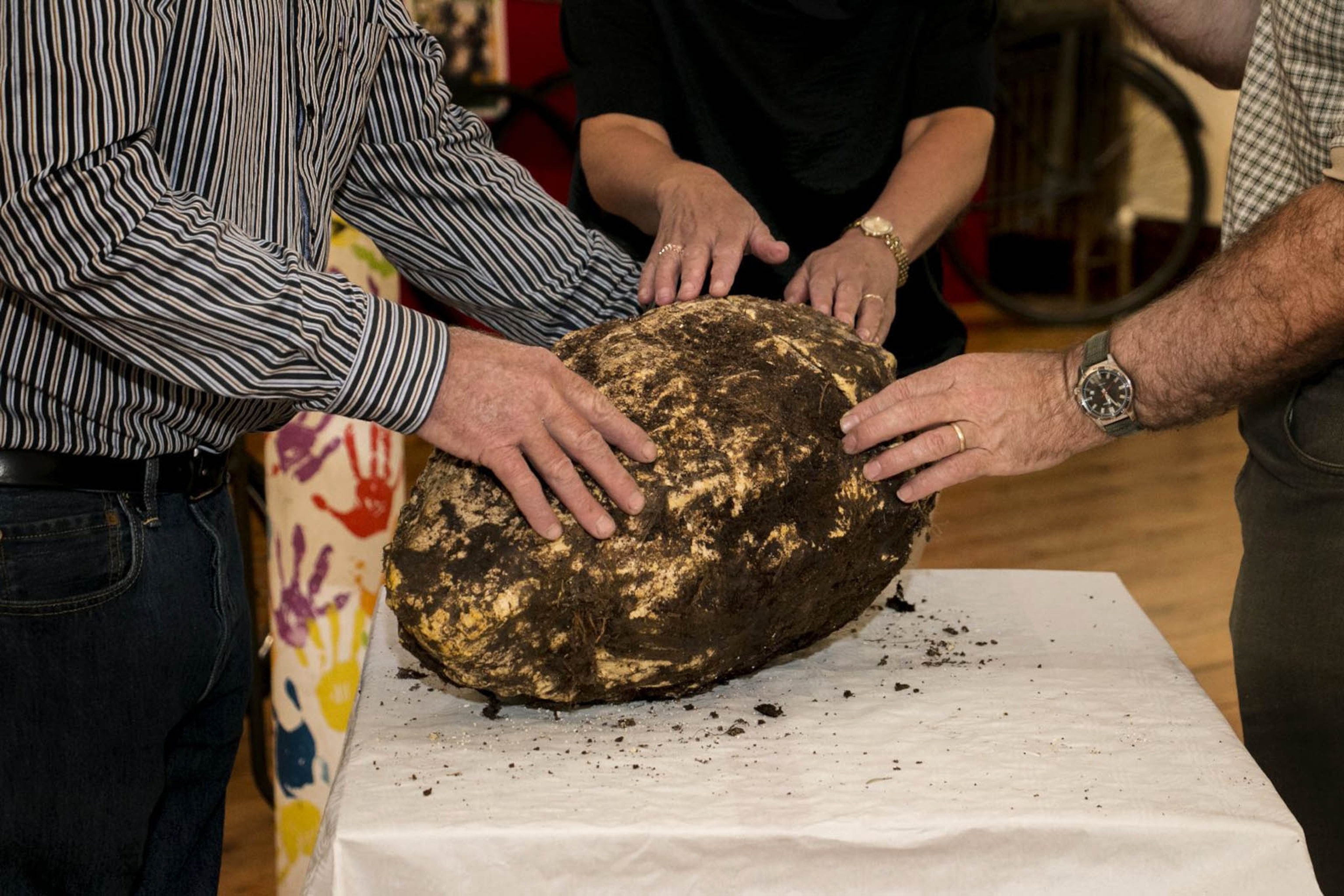
Bog Butter and Other Odd Ways the Ancients Preserved Food
Before the Frigidaire, Persians built cooling caves and Greenlanders preserved birds inside of sealskins.
John Conway, an Irishman, was at work in a bog when he made an interesting discovery recently: a 22-pound lump of ancient “bog butter,” sunk into the depths of peat, likely from about 2,000 years ago. Though it sounds surprising to Americans, finding a clump of dairy fat in a bog is fairly commonplace, with 430 instances currently on record. The butter can be as old as the Iron Age—roughly 600 B.C.—or as recently as the 1600s. Even today, the stuff retains a buttery smell—a chef who tasted an ancient specimen said “it goes right up your nose;” a modern variation produced by the Nordic Food Lab in 2012 drew reviews ranging from “animal” to “salami.
So why put butter in a bog? Simple: Preservation.
Storing butter in the cool, low-oxygen, acidic waters of bogs made sense before refrigeration existed, according to historians, because the environment acts as a natural preservative—for everything from butter to human remains. What’s more, butter wasn’t just used as a foodstuff, but to pay taxes and barter, too, making a bog into something of a precursor to savings accounts.
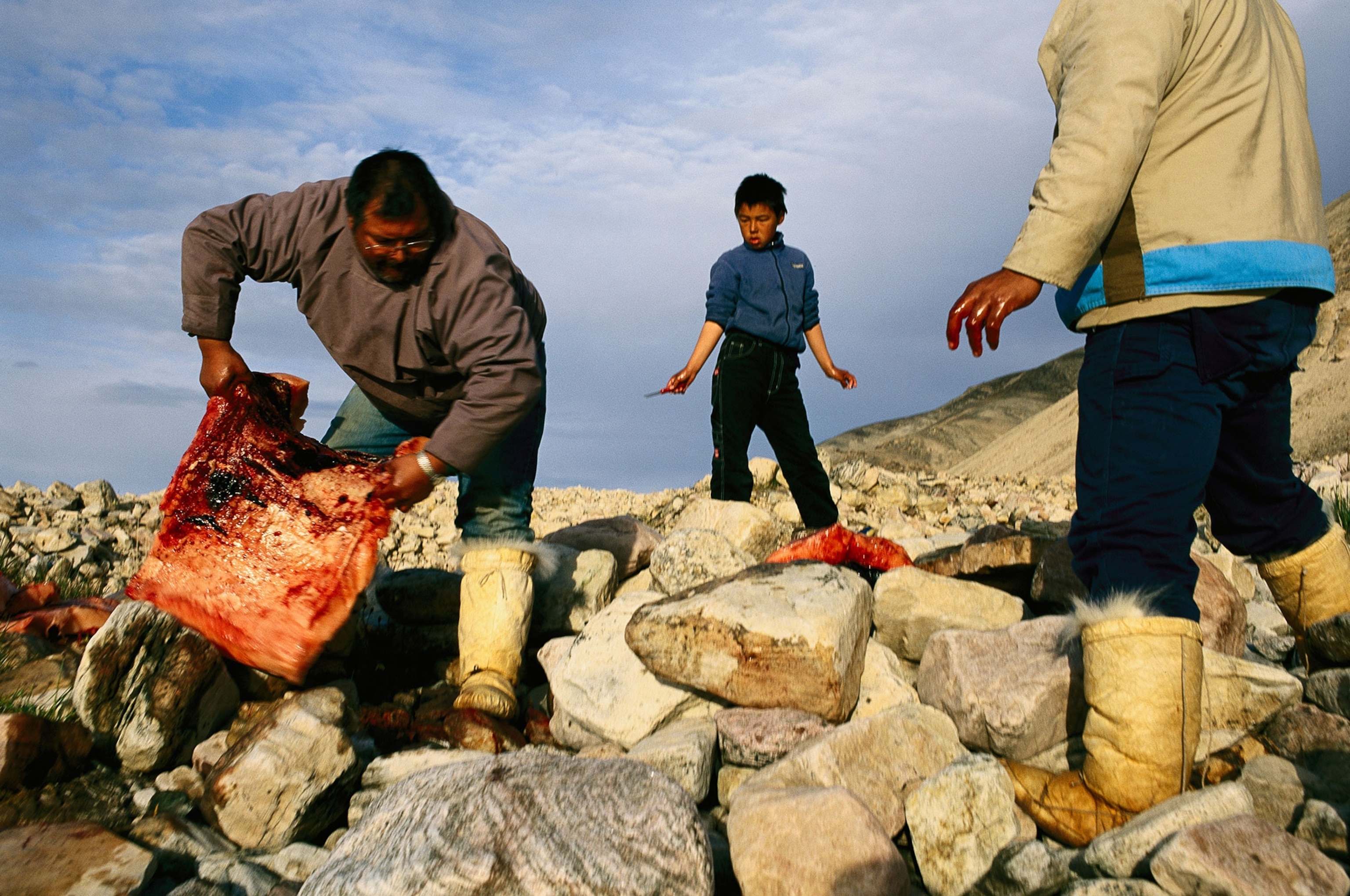
That’s not the only funky way that people of yesteryear preserved their food. Check out three more methods beyond the bog:
Fermented and Buried in a Sealskin
Anyone who’s tasted kimchi has some familiarity with the culinary magic imparted by burying food and letting it ferment. The native peoples of Greenland have a bury-that-food trick up their sleeve, too: A clean, well-greased sealskin stuffed with hundreds of small birds and left to ferment, called kiviak. The preparation here is key. The seal is harvested for its meat, while the skin is left largely intact, then sewn into a bag shape. The cavity is stuffed with dead birds—intact with feathers, beaks and all—and then sewn shut. The whole thing is slathered with oils, to discourage maggot infestations, and then placed into a hole, seam side up (to allow gases to escape), and covered with rocks. It stays there for anywhere from three to 18 months, and is traditionally brought out at Christmastime for the celebration.
Diners split open the seal, and eat the birds whole; the heart is particularly prized. A BBC producer who documented a 2010 kiviak feast likened the taste to “a cross between licorice and the strongest cheese I’ve ever had.”
Cured, Then Smashed in a Saddlebag
Americans are familiar enough with pastrami, but who knew it came from an ancient practice of Turkish horsemen: Stuffing saddlebags with spice-cured raw beef, which were necessarily pressed (repeatedly) against the side of the horse as the men rode. The key is to salt the meat, cure it by air drying it for a while, and then smearing it thoroughly with spices and salt, which prevent air and microbes from accessing the meat. The most direct culinary descendent of the saddlebag bounty is the chewy, spicy pastirma; the name means “being pressed.”
Though it’s tempting to conflate pastirma with pastrami, the two preparations have some significant differences. Though both use spice rubs and traditionally feature beef, the similarities end there. Pastrami, after all, has always been spiced and smoked—and never, so far as anyone knows, packed into saddlebags for pressing.
Going Off-Grid in the Desert
If you’ve ever experienced relief from summer heat via swamp cooler—a variant on air conditioning that relies on the cooling effect of the evaporation of water—you’ll understand how Persian yakchals worked their magic. Over time, engineers developed thick-walled domes with underground storage and water running through them, reaching a zenith around 400 B.C., according to historians. The structures were mostly used to store ice brought in from the mountains during winter, but occasionally stored food as well. Perhaps most impressive of all, yakchals stayed so cold that the desert society’s elite developed a taste for cold desserts like faloodeh—rosewater ice dappled with vermicelli noodles and sprinkled with lime juice. While few people are building the massive domes that make yakchals function, enterprising businessmen in India have recently begun to manufacture a modest at-home evaporative refrigerator, creating off-grid storage for perishables.


